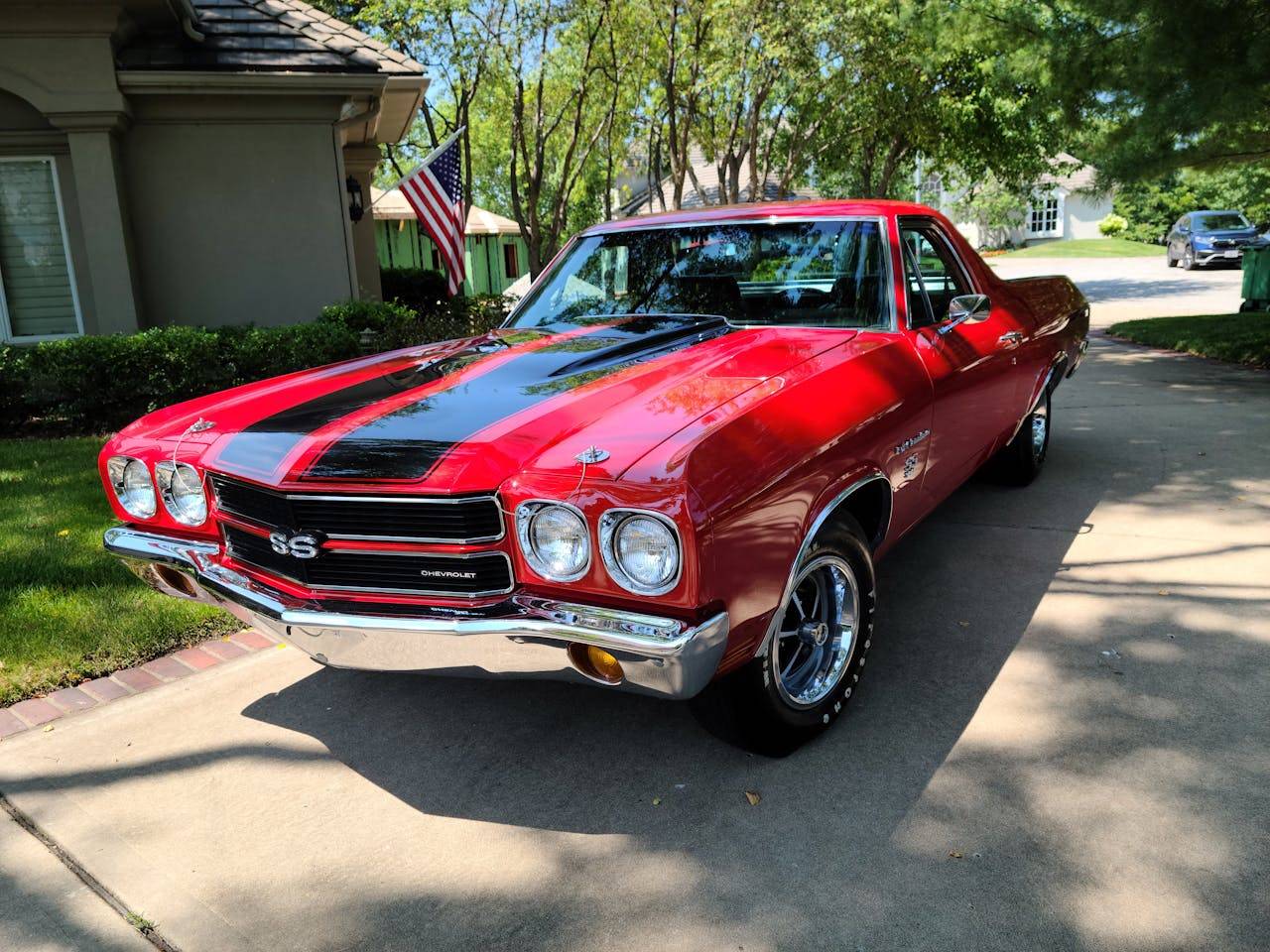Ferrari is a name synonymous with speed, luxury, and automotive excellence. The Prancing Horse’s legend is replete with newfangled supercars, world-first performance tech, and the finest automotive machines ever created.
Vintage Ferrari automobiles, in particular, have a special place in the hearts of hearts of collector enthusiasts. This article looks at some of the most popular vintage Ferrari models of all time, explaining their history, general design, and why these models are so treasured to this day.
The Birth of a Legend
Ferrari was formed in 1939 when its founder, Enzo Ferrari, split away from Alfa Romeo’s race division; however, the first road car bearing Ferrari’s name was the 125 S, which came along in 1947.
From the outset, though, Ferrari was a race team that sold cars as a way to finance its efforts to win on the track. When the company finally found some early success with the 1.5-litre 125 racecar, it began selling 125 Sport models for the road.
The marriage of aesthetic and technical prowess quickly made Ferrari famous for building the fastest road cars in the world.
Ferrari 250 GTO: The Holy Grail
Of all Ferraris, that of the 250 GTO springs fastest to the mind. The roadgoing version was announced in 1962 for GT racing, the brainchild of both Giotto Bizzarrini and Mauro Forghieri, two of Enzo’s best engineers.
With its 3.0-litre V12 engine producing about 300 hp, aided by a featherweight chassis, it was built to exceptionally high standards of engineering and performance. It also appeared as a beautiful, aerodynamic body that would become an icon in its own right.
And what makes the 250 GTO unique is more than its rarity. Of the 36 built between 1962 and ’64, it’s not only the rarest Ferrari but the rarest of them all. It also racked up several victories and championships on the racetrack. A 250 GTO sold at auction last August for nearly $70 million, making it one of the most expensive collector cars in the world.
Ferrari 275 GTB: A Symbol of Elegance
Another all-round winner that was also introduced in 1964 is the Ferrari 275 GTB. Also, from Pininfarina’s drawing board, the 275 GTB was as pretty a car as one could desire and, indeed, sexier than almost anything else.
It was also a great driver’s car and, like the 250 GTO that preceded it, it was the first all-out Ferrari race car to benefit from independent rear suspension and a transaxle layout, helping bring the engine’s weight forward.
A 3.3-litre V12 lurked under the bonnet, pumping out up to 300 horsepower, depending on the version. The result was a 0 to 60 mph time of just 6.8 seconds, a quarter-mile sprint in 14.7 seconds, and a top speed of around 160 mph.
Right or wrong, virtually all automotive design experts agree that the 275 GTB is one of the most beautiful cars ever built. The long profile, the generous overhangs, and the snarling ferocity of the rounded nose are unmistakable.
The 275 GTB was available with both a short nose and a long nose, the latter having a more refined, slightly improved aerodynamic shape.
Ferrari 330 P4: The Racing Icon
Most vintage Ferraris are built as road cars, though even those cars come from a hallowed tradition of proving grounds events and challenging design hurdles in preproduction.
Enzo Ferrari drove the 500 Superfast to Pikes Peak in 1969, and the 250 GTO won its first race in the period. The 330 P4 was purpose-built for the track. Unveiled in 1967, Ferrari updated the strong V12 straight engine and aerodynamic form with the latest developments in racing technology.
They needed a response to Ford’s unprecedented domination of the 24 Hours of Le Mans in 1966 and 1967. Nowhere is the marriage of brutish beauty and technical advancement more real than in the 330 P4. It stands as one of the most potent, best-engineered, and most beautiful racing cars of the era.
It was fitted with a 4.0-litre V12, putting out around 450 horsepower, and paired with one of the best lightweight chassis and aerodynamics Ferraris ever made, resulting in a formidable competitor.
Ferrari Dino 246 GT: A Tribute to a Legend
The Dino 246 GT was named after the son of Enzo Ferrari, Alfredo’ Dino’ Ferrari, who had tragically died in his early 20s due to heart problems. So it was right that their first Ferrari sportscar would be named accordingly.
Produced between 1969 and 1974, the Dino 246 GT was developed with the hopes that it would make Ferrari more accessible by being a slightly less expensive alternative to the prancing horse. The Dino may have come from a larger sibling, but it was no slouch.
Powered by a V6 rather than the more traditional 12-cylinder V12, the Dino 246 GT’s air-cooled 2.4-litre engine produced 195hp. That gave it respectable performance figures by the standards of the day, with the Italian ship able to reach 150mph and make the sprint from 0 to 60mph in 7.8 seconds.
The Dino 246 GT was also the first Ferrari to feature a mid-engine layout. This gave the car excellent balance, allowing it to handle like a dream.
Ferrari 365 GTB/4 Daytona: The Quintessential Grand Tourer
Replacing the 275 GTB, it was introduced to the public in 1968 at the Paris Salon, where Ferruccio Lamborghini privately bought a prototype shortly after that. The car gained the nickname ‘Daytona’ as a way of celebrating Ferrari’s victory of three cars at the 24 Hours of Daytona in 1967.
Ferrari ultimately adopted the name. The 365 GTB/4 was set up to serve as the top-of-the-range sports car for Ferrari, an iconic high-performance grand tourer that would comfortably cover distances of hundreds of miles at high speed.
It was powered by a 4.4 liter, 352hp V12 behind the driver and had a top end of around 174 mph, putting it squarely in the realm of the fastest road cars. Its design by Leonardo Fioravanti at Pininfarina had an exaggeratedly tense, angular look, almost as though it were edging menacingly forward on its nose.
Second, it was available as a coupe or a convertible. However, it is the latter that commands the higher price today, a phenomenon driven by the allure of an open-top vintage grand tourer capable of offering a decent touring experience at high speed. It is one of the greatest GTs ever made.
Ferrari 250 Testa Rossa: A Racing Legend
The Ferrari 250 Testa Rossa (‘red head’) made its racing debut in 1957 and would go on to be the most successful and iconic vehicle Ferrari ever produced. Built to compete in the ultimate test of endurance racing, known as grand touring car races, the 250 Testa Rossa had an output of 300 horsepower powered by its 3.0 liter V12 engine.
Coupled with its compact body made of lightweight materials and aerodynamic features, the 250 Testa Rossa was a force to be reckoned with on the track.
The 250 Testa Rossa achieved great success on the track, with three overall wins at the 24 Hours of Le Mans. Its pontoon fenders, long nose, and low-slung, aggressive looks make for one of the most recognizable Ferraris ever made.
Only 34 Testa Rossas were made, increasing their exclusivity and desirability. Their combination of performance, design, and racing pedigree has long made them one of the most valuable collector cars in the world. They have recently sold for tens of millions of dollars.
Ferrari 250 California: The Hollywood Star
The Ferrari 250 California was launched in 1957. It was aimed at North American clientele for whom a high-performance convertible was of primary importance. Equipped with a 3.0-litre V12 engine delivering approximately 240 hp, it achieved considerable performance values.
Long and decidedly flowing in the Pininfarina tradition, the 250 California’s svelte shape exuded high-class good looks through its almost perfect proportions. Available in both short-wheelbase (SWB) and long-wheelbase (LWB) forms, the former is generally preferred by collectors.
This one, dubbed the ‘GTO Ferrari,” was fast, good-looking, and incredibly rare. It won class victories at the 24 Hours of Le Mans. This combination of pedigree, style, and exclusivity has solidified the GTO among the most sought-after Ferraris ever made, and now it is something of a Hollywood darling, too.
The legendary Ferrari 250 California competed at the 24 Hours of Le Mans and was featured in the 1986 film Ferris Bueller’s Day Off.
Ferrari 250 GT Lusso: The Epitome of Style
The Ferrari 250 GT Lusso (1962) remains one of Ferrari’s most beautiful road cars, for Kurt’s money, and one of the 250 GT series of Ferrari production models with the longest production run of 2½ years.
It was penned by the main Ferrari designer, Pininfarina, who was known for his sleek and flowing lines and who coated the car’s simple elegance with luxury inside. The heart of the Lusso (Italian for ‘luxury’) was its 3.0-litre V12 producing 240hp, which gave it impressive performance.
The 250 GT Lusso brought extra comfort, luxury, and style to an already desirable product. While still functional, the Lusso’s interior education aimed higher than that of most cars of the period: it boasted cloth seats with wooden door panels, hand-finishing, and quality materials.
Luxury might have been part of its brief, but the 250 GT Lusso retained all the sportiness of the previous 250 GTs, with a top speed of over 150 mph. It’s a heady combination of style, performance, and luxury, and it is perhaps the most iconic of all Ferrari road cars. Only collections are complete with one.
Ferrari 166 MM: The First Legend
The 166 MM debuted in 1948 and established Ferrari’s sporting and racing heritage. Its 2.0-litre V12 produced around 140 horsepower and was capable of remarkable performance figures for the period.
Developed for sports car racing, including back-to-back wins overall at both the 24 Hours of Le Mans and the 1,000 M truckких миль в миле, the MM166 was in many ways a version 2 of the rugged and basic 250 Testa Rossa.
By the time it arrived, its graceful, low-drag body with its distinctive shark-nosed front end and toothy grin became arguably the most identifiable, dominant, and beloved of all Ferrari designs.
Only 39 166 MMs were ever built, adding to their rarity and Desirability. The car’s feat of engineering, styling, and racing history make it one of the most expensive collector cars in the world today. Prices of various examples have reached tens of millions of dollars.
The Bottom Line
Ferrari built his reputation on ingenious technical solutions, exhilarating performance, and gorgeous visual aesthetic, and the company’s classic cars are still regarded as the epitome of automotive art: you only need to look at the universally revered 250 GTO and 330 P4 race cars and the beautiful 275 GTB and 250 GT Lusso grand tourers to see why.
They are full of passion, mastery, and relentless striving for excellence. Just like the cars they represent, specific names know Ferrari’s models; each represents a unique vision, and the companies that eventually became Ferrari ruled the field at the time when automotive engineering and design were reaching new pinnacles.








Leave a Comment